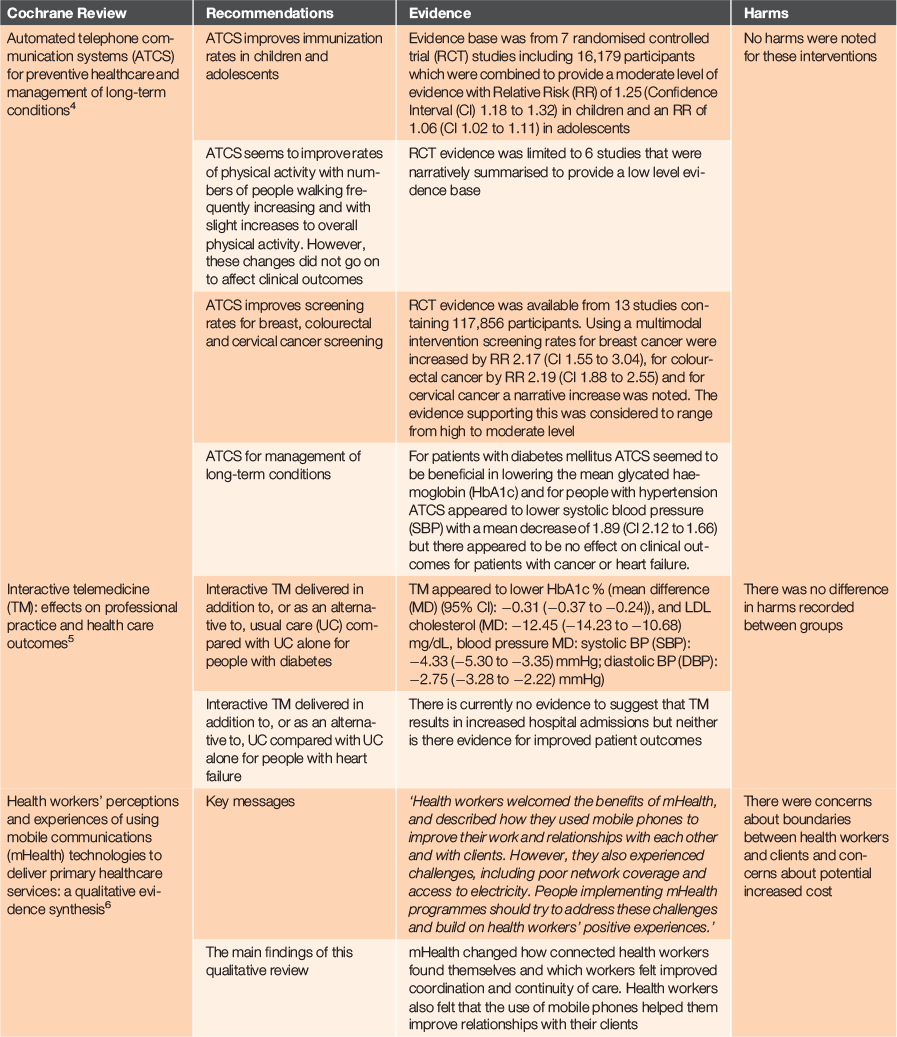Coronavirus (COVID-19): remote care through telehealth
Vanessa Jordan 1New Zealand Cochrane Fellow, University of Auckland, Auckland, New Zealand. Email: v.jordan@auckland.ac.nz
Journal of Primary Health Care 12(2) 184-185 https://doi.org/10.1071/HC15951
Published: 29 June 2020
Journal Compilation © Royal New Zealand College of General Practitioners 2020 This is an open access article licensed under a Creative Commons Attribution-NonCommercial-NoDerivatives 4.0 International License
Cochrane Special Collection: https://www.cochranelibrary.com/collections/doi/SC000043/full1
Background: On the 11th of March 2020 the World Health Organization (WHO) declared the novel coronavirus (COVID-19) outbreak a global pandemic.2 Since then healthcare worldwide has had to rise to the challenge of how to deliver healthcare safely to people with health needs without overtly exposing them to this virus. Telehealth is used to describe interventions delivered over distance and is made up of the following three components. First the patient provides data, second the information is transferred electronically and then third the clinician provides feedback.3 Cochrane has put together a special collection highlighting all the evidence currently summarised in systematic reviews with relevance to telehealth.1 This will hopefully assist health care providers in knowing the best ways to offer telehealth in order to gain the most benefit.
Clinical Bottom Line: Automated telephone reminders are ideal for improving immunization and screening rates and are also beneficial for people with diabetes and hypertension.4 Interactive telemedicine is beneficial again for people with diabetes and will not cause people with heart failure to have a change in their condition and so healthcare for people with both conditions can be managed effectively this way.5 A new qualitative review looking at healthcare workers perceptions of using mobile technology has also shown that telehealth can be beneficial not only for patients but also for the workers.6

|
References
[1] Cochrane Library. Coronavirus (COVID-19): remote care through telehealth. 2020 [cited 2020 May 21]; Available from: https://www.cochranelibrary.com/collections/doi/SC000043/full.[2] World Health Organization. WHO Director-General’s opening remarks at the media briefing on COVID-19 11 March 2020.
[3] McLean S, Protti D, Sheikh A. Telehealthcare for long term conditions. BMJ 2011; 342 d120
| Telehealthcare for long term conditions.Crossref | GoogleScholarGoogle Scholar | 21292710PubMed |
[4] Posadzki P, Mastellos N, Ryan R, et al. Automated telephone communication systems for preventive healthcare and management of long‐term conditions. Cochrane Database Syst Rev 2016; CD009921
| Automated telephone communication systems for preventive healthcare and management of long‐term conditions.Crossref | GoogleScholarGoogle Scholar | 27960229PubMed |
[5] Flodgren G, Rachas A, Farmer AJ, et al. Interactive telemedicine: effects on professional practice and health care outcomes. Cochrane Database Syst Rev 2015; CD002098
| Interactive telemedicine: effects on professional practice and health care outcomes.Crossref | GoogleScholarGoogle Scholar | 26343551PubMed |
[6] Odendaal WA, Watkins JA, Leon N, et al. Health workers’ perceptions and experiences of using mHealth technologies to deliver primary healthcare services: a qualitative evidence synthesis. Cochrane Database Syst Rev 2020; CD011942
| Health workers’ perceptions and experiences of using mHealth technologies to deliver primary healthcare services: a qualitative evidence synthesis.Crossref | GoogleScholarGoogle Scholar | 32216074PubMed |


